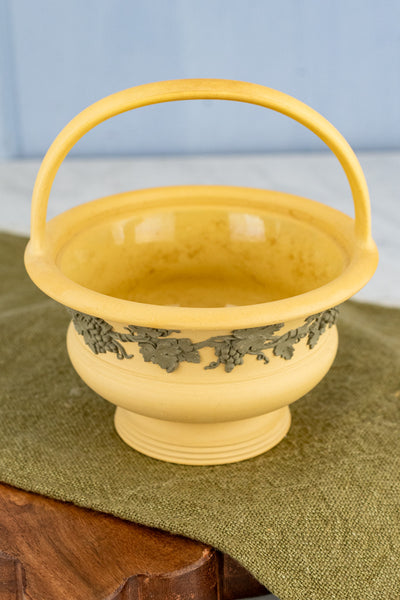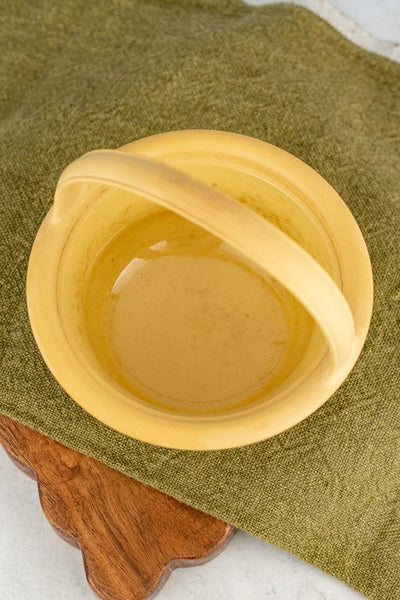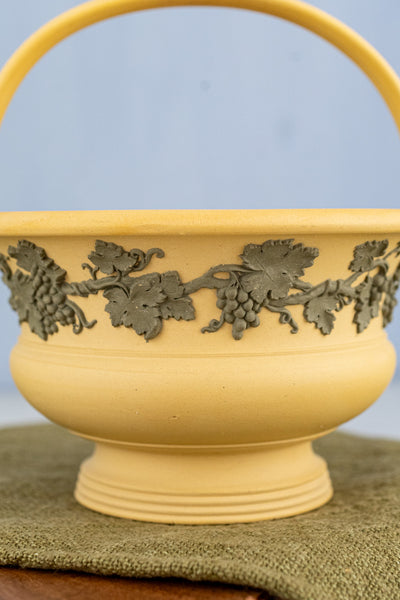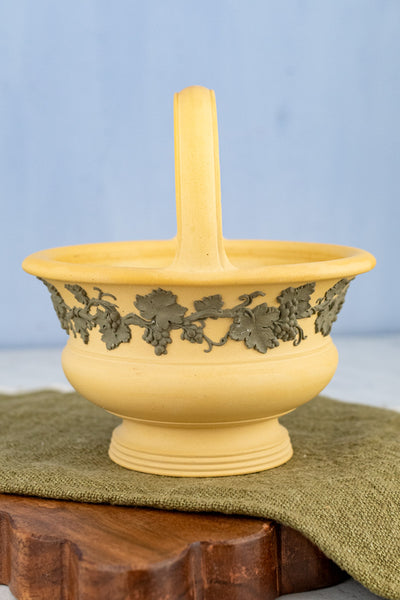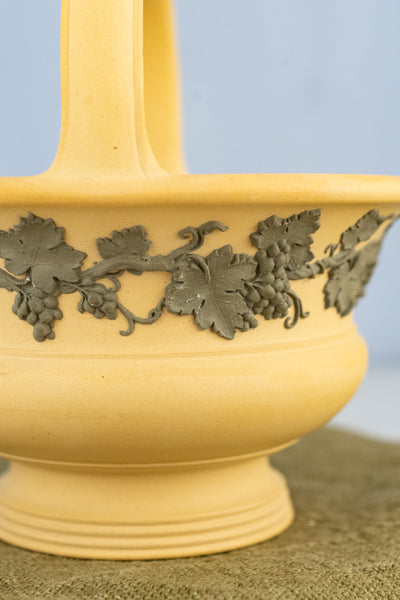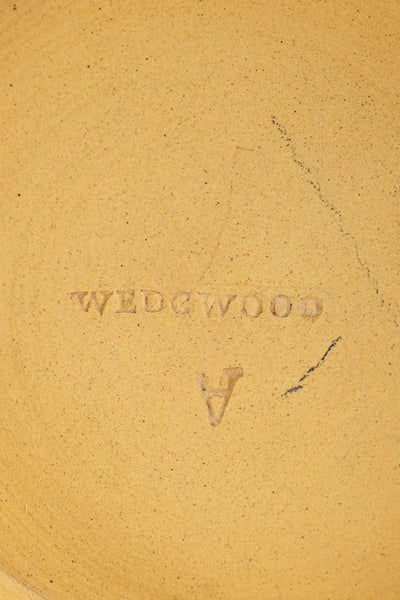Antique Wedgwood Caneware Basket
Antique Wedgwood Caneware Basket
$225.00
Produced by the revered Wedgwood potters of England circa the 1820s, this Antique Caneware Basket is decorated in warm blue relief, featuring a design of grapes and grape leaves along the rim of the basket.
Caneware is a buff-colored stoneware body, made from local marl clay and flint, first produced by Josiah Wedgwood in 1770 but significantly improved over the next two decades by the addition of Cornish china stone. Its heyday coincided with the fashion for bamboo during the Regency period, circa 1800-1820.
A lovely addition to the table, desk, shelf, sideboard display, we are confident this beautiful basket will bring a timeless elegance to any setting.
Strictly one-of-a-kind and subject to prior sale. Measures 5.75"H x 5.125"D. In very good antique condition.
Learn More About Josiah Wedgwood
Few names in the history of ceramics shine as brightly as that of Josiah Wedgwood. Born in 1730 in Staffordshire, England, Wedgwood transformed the humble craft of pottery into both high art and high fashion. An inventor at heart, he perfected creamware, jasperware, and black basalt, designs that carried the elegance of antiquity into the parlors of Georgian England and beyond. When Queen Charlotte chose his cream-colored earthenware for her table, Wedgwood cleverly branded it “Queen’s Ware”—and soon the crowned heads of Europe were clamoring for their own services.
Ever the consummate salesman, Wedgwood pioneered marketing tactics still familiar today. He opened glittering showrooms in London, staged lavish product launches, and understood the power of limited editions. He offered money-back guarantees, distributed illustrated catalogues, and sent samples to aristocratic tastemakers who would, in turn, influence demand. He even kept meticulous records of his clientele to track preferences and anticipate desires—an early form of customer relationship management. At the same time, he harnessed the ideals of his age, producing the now-iconic abolitionist medallion “Am I Not a Man and a Brother?” which married artistry with social conscience.


